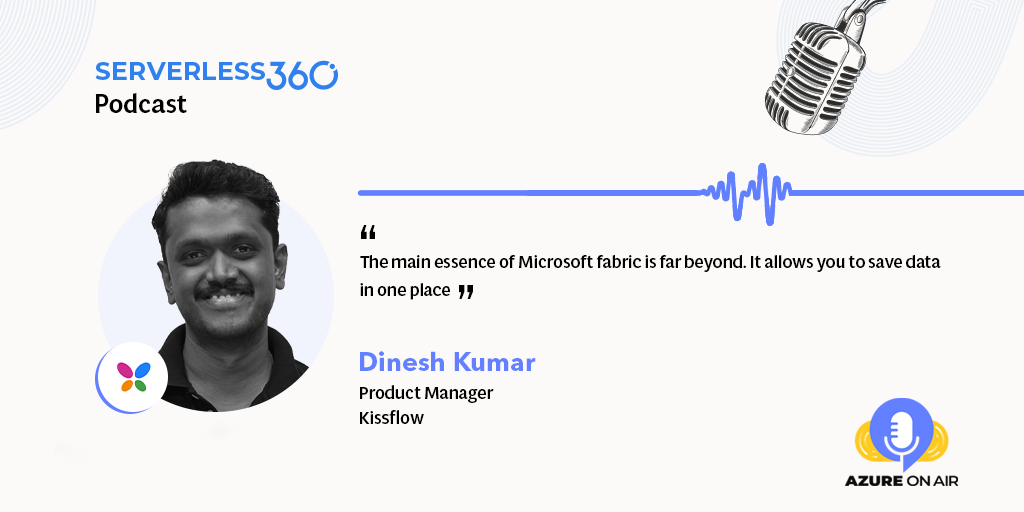Microsoft Fabric Explained: All You Need to Know
Microsoft Fabric is not just another data platform; it’s a game-changer. But what exactly is Microsoft Fabric, and why is it generating so much buzz? To answer that, we turn to the expertise of Dinesh Kumar, Microsoft MVP in the data platform category. According to his insights, Microsoft Fabric is a dedicated platform designed to address the needs of both data analytics and engineering.
At its essence, Microsoft Fabric enables real-time analytics without the hassle of ETL (Extract, Transform, Load) processes or change feeds between OLTP (Online Transaction Processing) and OLAP (Online Analytical Processing) systems. This means that it simplifies and accelerates data analysis by eliminating the need for time-consuming data transformation steps.
One Unified Data Platform
One of the standout features of Microsoft Fabric is its ability to bring all your data into one place, without duplication. In traditional data scenarios, different teams or individuals might use various services to work with data. For instance, data analysts might rely on Power BI, while data engineers might prefer Azure Data Factory or Azure SQL Data Warehouse. In such cases, each team often ends up creating separate copies of the same data, leading to inefficiencies, inconsistencies, and increased storage costs.
Microsoft Fabric changes this paradigm. It redefines the architecture by separating data, compute, and services. This means that all three components can function independently, and data no longer needs to be tied to specific services. The result? A single source of truth where data resides, which can be accessed and manipulated by different services without redundancy.
Microsoft Fabric vs. Other Platforms
You might wonder how Microsoft Fabric stacks up against other data platforms like Synapse Analytics, which also aimed to provide a unified experience for data professionals. The difference lies in Microsoft Fabric’s unique approach. While Synapse Analytics and similar services offer a consolidated interface for different tools, Microsoft Fabric takes it a step further by providing a Software as a Service (SaaS) integrated experience. This means that you can access various services without needing to access the Azure portal separately. It’s about experiences rather than services.
Furthermore, Microsoft CEO Satya Nadella has emphasized the significance of Microsoft Fabric, likening its impact to that of SQL Server in the data platform domain. This underscores Microsoft’s commitment to the platform’s success and development.
OneLake: The Heart of Data Storage
To truly understand Microsoft Fabric, we need to explore OneLake, a pivotal component of this ecosystem. OneLake serves as the centralized hub for data storage. Think of it as the heart of your data architecture. With OneLake, you can store data from various services in one unified location, eliminating the need for data duplication.
Let’s imagine a scenario: you have data analysts using Power BI to create insightful dashboards, and data scientists leveraging the same data for machine learning models. Traditionally, these two teams might store copies of the data in different places, leading to synchronization challenges and potential inconsistencies. OneLake changes this by acting as the central repository for all your data. It’s a single source of truth, and every service accesses this source, ensuring data consistency and accuracy.
Getting Started with Microsoft Fabric
By now, you might be eager to dive into Microsoft Fabric and explore its capabilities. The good news is that getting started is accessible. While Microsoft Fabric is still in private preview, you don’t necessarily need an Azure account to access it. If your organization subscribes to Microsoft Office 365, you can enable a trial version of Microsoft Fabric. This trial version is available until October 2023, and it provides a valuable opportunity to explore and experiment with the platform.
Recommendations by the expert:
For anyone venturing into the realm of data analytics and engineering, the opportunities are vast. Microsoft Fabric, with its unique approach and features, is set to revolutionize this domain. Beginners are encouraged to explore data engineering, understanding its nuances and capabilities.


